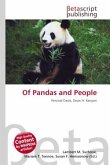The term Kuki, in literature, first appeared in the writing of Rawlins when he wrote about the tribes of the Chittagong Hill Tracts. It refers to "Hillsmen" comprising numerous clans. These clans share a common past, culture, customs and tradition. They speak in dialects that have a common root language belonging to the Tibeto-Burman group. Kuki have Mongoloid features and are generally short-stature with straight black hair, Dark brown eyes and brown skin. The different kuki clans are recognised as schedule tribe of India. They spread out in a contiguous region in Northeast India, Northwest Burma, and the Chittagong Hill Tracts in Bangladesh. They are most prominent in Manipur, Nagaland, Assam and Mizoram. Kuki is composed of many different entities/Clans: Aimol, Anal, Baite, Changsan, Chiru, Chongloi, Chothe, Darlawng, Doungel, Guite, Halam, Haokip, Haolai, Hangsing, Hmar, Hrangkhawl, Kipgen, Koireng, Khelma / Sakachep, Kolhen, Kom, Lamkang, Lenthang, Lhanghal, Lhouvum, Lhungdim, Lunkim, Lupho, Lupheng, Thangeo, Lhangum, Maring, Mate, Misao, Monsang, Moyon, Paite, Purum, Simte, Singsit, Sitlhou, Tarao, Touthang, Vaiphei, Zou etc
Bitte wählen Sie Ihr Anliegen aus.
Rechnungen
Retourenschein anfordern
Bestellstatus
Storno








